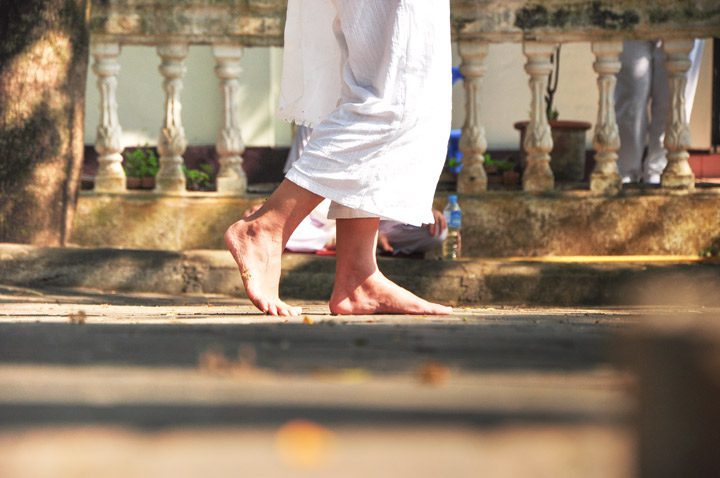
While there are numerous methods of meditation, sometimes it’s a challenge to know which meditation styles could be the best for you. Fortunately, it’s easy and free to try as many forms as you like until you find the right fit.
Why Meditate?
The benefits of meditation differ for each person, but scientific study of the practice continues to maintain that even a mere 5 minutes a day of stillness can improve energy, heighten immune system function, reduce stress, and promote better emotional health, among other advantages.
In fact, meditation acts as a means by which we can promote a stronger mind-body-spirit connection, which enhances our health in numerous ways. Here are some recent studies:
- The Harvard Gazette reports that mindfulness and meditation not only helps people with anxiety but also those with depression manage these conditions more effectively.
- Mindful magazine shares a roundup of research that indicates how the practice improves stress resilience, reduces cognitive decline, and works better when people are outdoors.
- Some of the latest research, according to Mindworks, points to meditation helping everyone from high school students to people with chronic pain and mental health issues.
So, while it’s possible that a consistent meditation practice can induce many positive changes, it’s always a good idea to recognize it in a basic form: a few moments of focused stillness and peace every day is beneficial no matter what’s happening with you or in your life.
Meditation Styles
Yes, of course many people sit quietly in a cross-legged position with the backs of their hands on their knees to meditate, but that’s not the only way. Keeping an open mind to all the different styles of meditation allows for exploration into how a certain practice affects you, which one makes you feel most comfortable, and what you’ll return to each day.
Remember: the goal of meditation isn’t to stop thought, so it’s perfectly natural for your mind to wander during practice. Grocery list? That friend from 5th grade? A tragic conversation? Some random song you heard on the way to work? Your brain is eager to move beyond all of these things, and it will eventually. The point is not to dwell on fleeting thoughts, or think “Argh! If only I could stop thinking!” Each day will provide a new level of progress.
Here are a few options to try.
Walking Meditation
This mindful practice can occur whenever you’re out for a stroll, but if you’d like to apply a more deliberate intention to it, here are some—pardon the pun!—steps:
- Find a peaceful place indoors or outdoors that allows you to walk back and forth for up to 15 paces in each direction.
- Place your feet deliberately on the path, heel to toe, slowly moving in one direction. Focus on various sensations: notice your feet, how it feels to secure your heels to the surface and lift them back up again, how your body weight moves between each step, and so on. Pause and breathe at the end of your pace count.
- Now repeat the process in the opposite direction for a total of 10 minutes.
This moving meditation is one way to be more in touch with your mind and body.
Loving Kindness Meditation
This practice involves a series of phrases designed to increase acceptance, compassion, and kindness. You can follow a guided sequence, or choose to repeat the phrasing to yourself or others. Positioning yourself in a quiet spot, the opening phrase is often something similar to:
May I be strong. May I have the power to accept and forgive. May I be healthy. May I be safe. May I love and appreciate others boundlessly.
Then, the phrasing changes and expands to include others, simply by changing “I” to “you.” Directing mindful, affirmational energy toward yourself and others each day might reduce feelings of anger or anxiety.
Visualization Meditation
Some people use visualization techniques to ease the flow of thoughts and create a deeper state of calm.
The guide to visualization is to use as many of your senses as possible. For example, let’s say a peaceful place for you is sunrise over a desert in spring. So not only do you imagine sunshine peeking through the stately cacti, you also hear twittering birds, notice a warm breeze across your face faintly scented with lemony verbena, and swig cool water from a glass hiking bottle.
Sitting with a purposeful positive visual for a few minutes every day helps promote relaxation and reduce stress.
Mantra Meditation
Frequently what people think of first when considering mindful practices, a mantra is also a great technique to maintain focus during meditation. Depending on how you learn to meditate, a mantra might be assigned to you or you’ll choose a word or phrase with personal meaning.
During your practice of 5–to–15 minutes, you simply sit quietly and repeat the mantra in your mind. At some point you might notice there’s no need for the mantra, as you’re in a state of peace. That’s how you know it worked!
A Holistic Approach to Healing at Cottonwood Tucson
Every person who chooses Cottonwood Tucson for treatment receives individualized, whole-person care. In the development of that plan, we offer a wide range of holistic practices, including resources for meditation. Learn more about why we believe this approach establishes a solid foundation of wellness.






